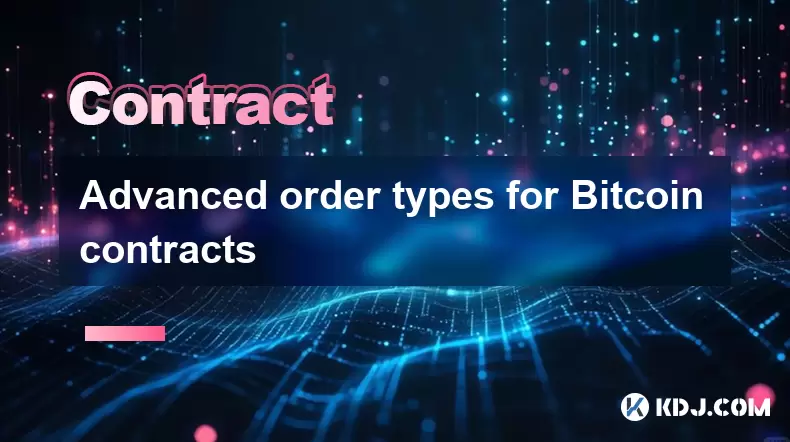-
 Bitcoin
Bitcoin $117100
0.03% -
 Ethereum
Ethereum $3751
0.52% -
 XRP
XRP $3.540
2.92% -
 Tether USDt
Tether USDt $1.000
-0.03% -
 BNB
BNB $766.2
2.34% -
 Solana
Solana $197.0
9.90% -
 USDC
USDC $0.9998
-0.01% -
 Dogecoin
Dogecoin $0.2740
1.78% -
 Cardano
Cardano $0.8900
4.86% -
 TRON
TRON $0.3145
0.94% -
 Hyperliquid
Hyperliquid $44.10
-3.58% -
 Stellar
Stellar $0.4720
2.49% -
 Sui
Sui $3.978
2.67% -
 Chainlink
Chainlink $19.38
1.24% -
 Hedera
Hedera $0.2697
0.17% -
 Avalanche
Avalanche $25.47
2.65% -
 Bitcoin Cash
Bitcoin Cash $521.0
-3.52% -
 Shiba Inu
Shiba Inu $0.00001543
1.08% -
 Litecoin
Litecoin $115.5
-1.06% -
 UNUS SED LEO
UNUS SED LEO $8.992
0.01% -
 Toncoin
Toncoin $3.345
3.01% -
 Polkadot
Polkadot $4.481
1.11% -
 Uniswap
Uniswap $10.96
5.09% -
 Ethena USDe
Ethena USDe $1.001
0.02% -
 Pepe
Pepe $0.00001414
2.00% -
 Monero
Monero $318.9
-1.25% -
 Bitget Token
Bitget Token $4.902
0.16% -
 Dai
Dai $0.9999
-0.02% -
 Aave
Aave $320.8
0.07% -
 Bittensor
Bittensor $448.1
8.95%
Can I practice trading Bitcoin contracts with a demo account?
Practice Bitcoin contract trading risk-free with demo accounts on platforms like Binance and Bybit, offering real-time data, leverage, and order types to build skills before live trading.
Jul 22, 2025 at 03:36 am

Understanding Bitcoin Contracts and Their Functionality
Bitcoin contracts, commonly referred to as Bitcoin futures contracts, are derivative financial instruments that allow traders to speculate on the future price of Bitcoin without owning the underlying asset. These contracts are widely used by both retail and institutional investors to hedge positions, leverage trades, or profit from price fluctuations. The contract value is derived from the price of Bitcoin on the spot market, and traders can go long (betting on a price increase) or short (betting on a price decrease).
These contracts are traded on various cryptocurrency exchanges and derivative platforms. They typically offer leverage, which allows traders to control larger positions with relatively small capital. However, leverage also increases both potential gains and losses. It is crucial for traders to understand the mechanics of these contracts before engaging in real-money trading.
What Is a Demo Account and Why It Matters
A demo account is a simulated trading environment provided by cryptocurrency exchanges or trading platforms that allows users to practice trading without using real money. It mirrors the features of a live trading account, including access to real-time market data, trading tools, and order execution systems. The primary purpose of a demo account is to help traders familiarize themselves with the platform, test trading strategies, and gain confidence before committing real funds.
For Bitcoin contract trading, demo accounts are particularly useful due to the high volatility and complexity involved. They provide a risk-free environment to understand how leverage works, how margin calls function, and how different order types behave under real market conditions.
Availability of Demo Accounts for Bitcoin Contract Trading
Many leading cryptocurrency exchanges and derivatives platforms offer demo accounts specifically for trading Bitcoin contracts. These include platforms like Bybit, Binance, OKX, and BitMEX. These demo accounts often come with virtual funds (e.g., $100,000 in demo USD), allowing users to open and close positions just as they would in a live market.
To access a demo account, users typically need to register on the platform, sometimes without the need for KYC verification. Once registered, they can switch between demo and live trading modes seamlessly. The interface and tools remain identical, ensuring a realistic trading experience.
Some platforms may also offer educational resources, such as tutorials, webinars, and strategy guides, to accompany the demo trading experience. This helps users not only practice but also learn the nuances of contract trading, including position sizing, liquidation levels, and funding rates.
How to Set Up and Use a Demo Account for Bitcoin Contracts
Setting up a demo account for Bitcoin contract trading is a straightforward process. Here’s a step-by-step guide:
- Visit the official website of the exchange and look for the "Demo Trading" or "Practice Trading" section.
- Register using a valid email address and create a secure password.
- Log in to your account and navigate to the trading interface.
- Switch to demo mode if the platform supports both live and demo environments.
- Access the derivatives or futures section and select Bitcoin contracts.
- Explore the trading interface, including order types, leverage settings, and risk management tools.
- Use the virtual funds provided to open long or short positions based on your market analysis.
It is essential to experiment with different leverage levels, test stop-loss and take-profit orders, and observe how margin works in a demo environment. This helps traders understand how their strategies perform under various market conditions without risking real capital.
Key Features to Look for in a Demo Account Platform
Not all demo accounts are created equal. When choosing a platform for practicing Bitcoin contract trading, consider the following features:
- Real-time market data: Ensure the demo account reflects live price feeds and order books to simulate real trading conditions.
- Access to all contract types: Some platforms may restrict demo users from accessing certain contract pairs or expiration dates.
- Customizable leverage settings: Look for platforms that allow you to adjust leverage levels, such as 1x to 100x, to understand how it affects your positions.
- Margin and liquidation tracking: A good demo account should display margin requirements, liquidation prices, and unrealized P&L in real time.
- Order execution types: Test different order types, including limit orders, market orders, and conditional orders, to understand their impact.
- Historical data and replay features: Some platforms offer market replay, allowing you to trade historical price data to test strategies.
These features ensure that the practice environment closely mirrors real trading, helping traders build practical skills and confidence.
Common Mistakes to Avoid While Using a Demo Account
Even though demo trading is risk-free in terms of capital, it is easy to fall into certain behavioral traps. Here are some common mistakes to avoid:
- Over-leveraging without consequences: In demo mode, traders might take excessive risks because there’s no real money at stake. This can create bad habits when transitioning to live trading.
- Ignoring risk management: Many demo traders skip setting stop-loss orders or managing position sizes, which can lead to significant losses in real trading.
- Using unrealistic order sizes: Since demo accounts provide virtual funds, some traders open unnaturally large positions, which do not reflect realistic trading behavior.
- Neglecting emotional discipline: Demo trading may not simulate the emotional pressure of real trading, such as fear and greed, which can affect decision-making.
To get the most out of a demo account, treat it as if it were a live trading environment. Apply the same risk management rules, trading plans, and discipline as you would with real money.
Frequently Asked Questions
Q: Can I lose virtual funds in a demo account?
Yes, while you are not risking real money, you can still "lose" virtual funds if your positions get liquidated. This helps simulate real trading scenarios and teaches risk management.
Q: Do all exchanges offer demo accounts for Bitcoin contracts?
No, not all exchanges provide demo accounts. However, most major platforms like Binance, Bybit, and OKX do offer demo trading for Bitcoin futures contracts.
Q: How long can I use a demo account?
Most platforms offer unlimited demo account access, although some may reset the virtual balance after a certain period or require re-registration.
Q: Can I switch between demo and live accounts on the same platform?
Yes, many platforms allow users to toggle between demo and live trading modes without needing to create separate accounts.
Disclaimer:info@kdj.com
The information provided is not trading advice. kdj.com does not assume any responsibility for any investments made based on the information provided in this article. Cryptocurrencies are highly volatile and it is highly recommended that you invest with caution after thorough research!
If you believe that the content used on this website infringes your copyright, please contact us immediately (info@kdj.com) and we will delete it promptly.
- Bitcoin, Trump Media, and Acquisition: A New York Perspective
- 2025-07-22 06:30:12
- Venture Capital, Crypto Treasuries, and Ethena (ENA): A New York Perspective
- 2025-07-22 06:50:13
- Solana: Building a Decentralized Nasdaq with Block Assembly Marketplace?
- 2025-07-22 06:30:12
- Jito, BAM, and Solana MEV: A New Era for Blockspace?
- 2025-07-22 06:50:13
- Raydium, Crypto Payroll, and Transformation: A New Era for Fintech
- 2025-07-22 07:30:12
- Arctic Pablo Coin Presale: The Meme Coin Opportunity of 2025?
- 2025-07-22 07:35:12
Related knowledge

What is a maker vs a taker fee?
Jul 19,2025 at 01:14am
Understanding the Basics of Cryptocurrency Exchange FeesIn the world of cryptocurrency trading, maker vs taker fees are a fundamental concept that eve...

How to secure your crypto futures trading account?
Jul 21,2025 at 11:42pm
Understanding the Risks in Crypto Futures TradingCrypto futures trading involves significant risks due to market volatility and leverage. Your trading...

Is Bitcoin futures trading a scam?
Jul 22,2025 at 01:42am
Understanding Bitcoin Futures TradingBitcoin futures trading refers to the process of buying and selling contracts that derive their value from the fu...

How to analyze Bitcoin futures data from CME?
Jul 19,2025 at 05:22pm
Understanding Bitcoin Futures on CMEBitcoin futures on the CME Group (Chicago Mercantile Exchange) represent a regulated financial instrument that all...

Advanced order types for Bitcoin contracts
Jul 21,2025 at 01:14pm
Understanding Advanced Order Types in Bitcoin ContractsIn the world of Bitcoin futures trading, advanced order types play a crucial role in managing r...

Common mistakes in crypto futures trading
Jul 20,2025 at 09:56pm
Overleveraging Without Risk ManagementOne of the most common mistakes in crypto futures trading is overleveraging. Traders often believe that using hi...

What is a maker vs a taker fee?
Jul 19,2025 at 01:14am
Understanding the Basics of Cryptocurrency Exchange FeesIn the world of cryptocurrency trading, maker vs taker fees are a fundamental concept that eve...

How to secure your crypto futures trading account?
Jul 21,2025 at 11:42pm
Understanding the Risks in Crypto Futures TradingCrypto futures trading involves significant risks due to market volatility and leverage. Your trading...

Is Bitcoin futures trading a scam?
Jul 22,2025 at 01:42am
Understanding Bitcoin Futures TradingBitcoin futures trading refers to the process of buying and selling contracts that derive their value from the fu...

How to analyze Bitcoin futures data from CME?
Jul 19,2025 at 05:22pm
Understanding Bitcoin Futures on CMEBitcoin futures on the CME Group (Chicago Mercantile Exchange) represent a regulated financial instrument that all...

Advanced order types for Bitcoin contracts
Jul 21,2025 at 01:14pm
Understanding Advanced Order Types in Bitcoin ContractsIn the world of Bitcoin futures trading, advanced order types play a crucial role in managing r...

Common mistakes in crypto futures trading
Jul 20,2025 at 09:56pm
Overleveraging Without Risk ManagementOne of the most common mistakes in crypto futures trading is overleveraging. Traders often believe that using hi...
See all articles

























































































